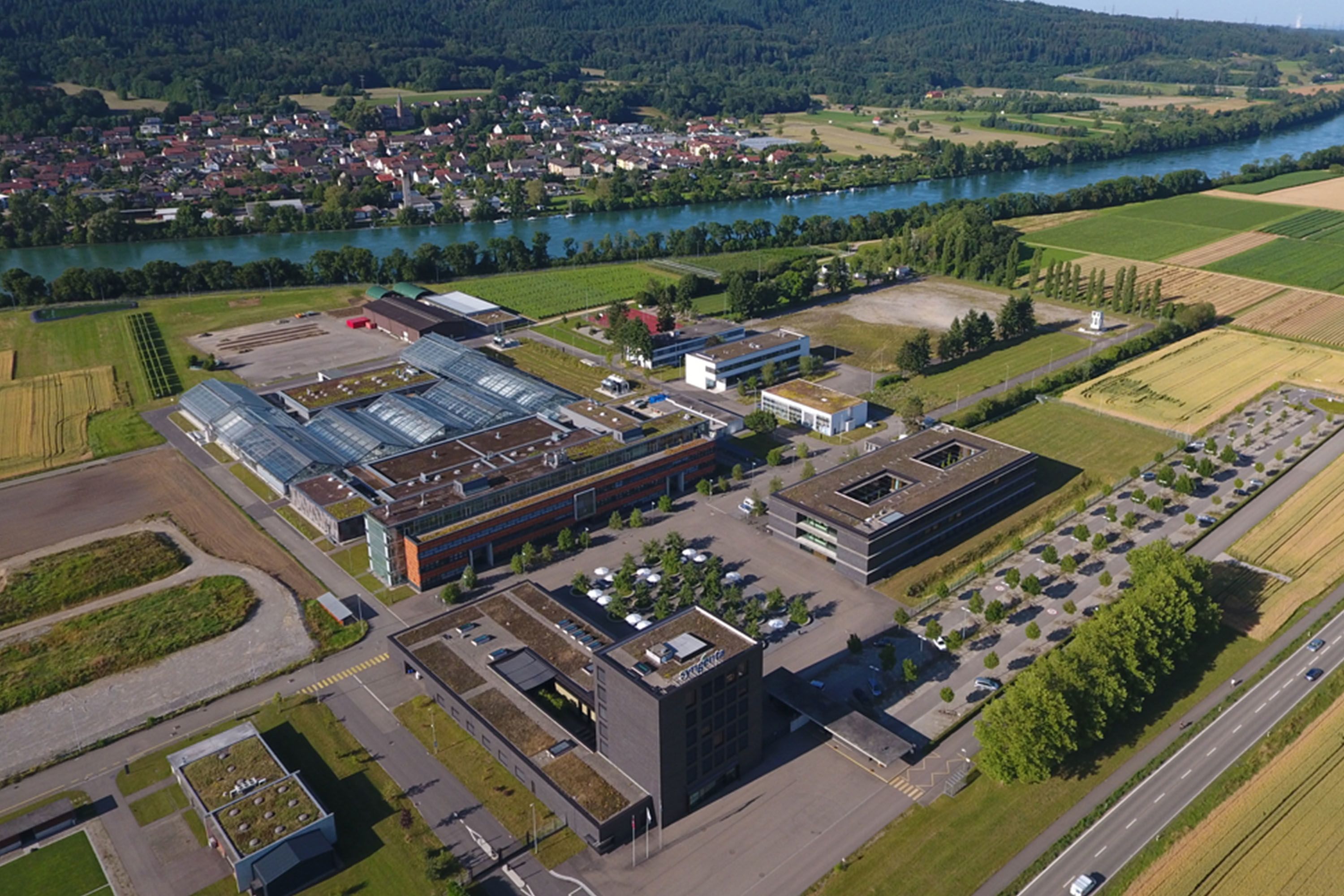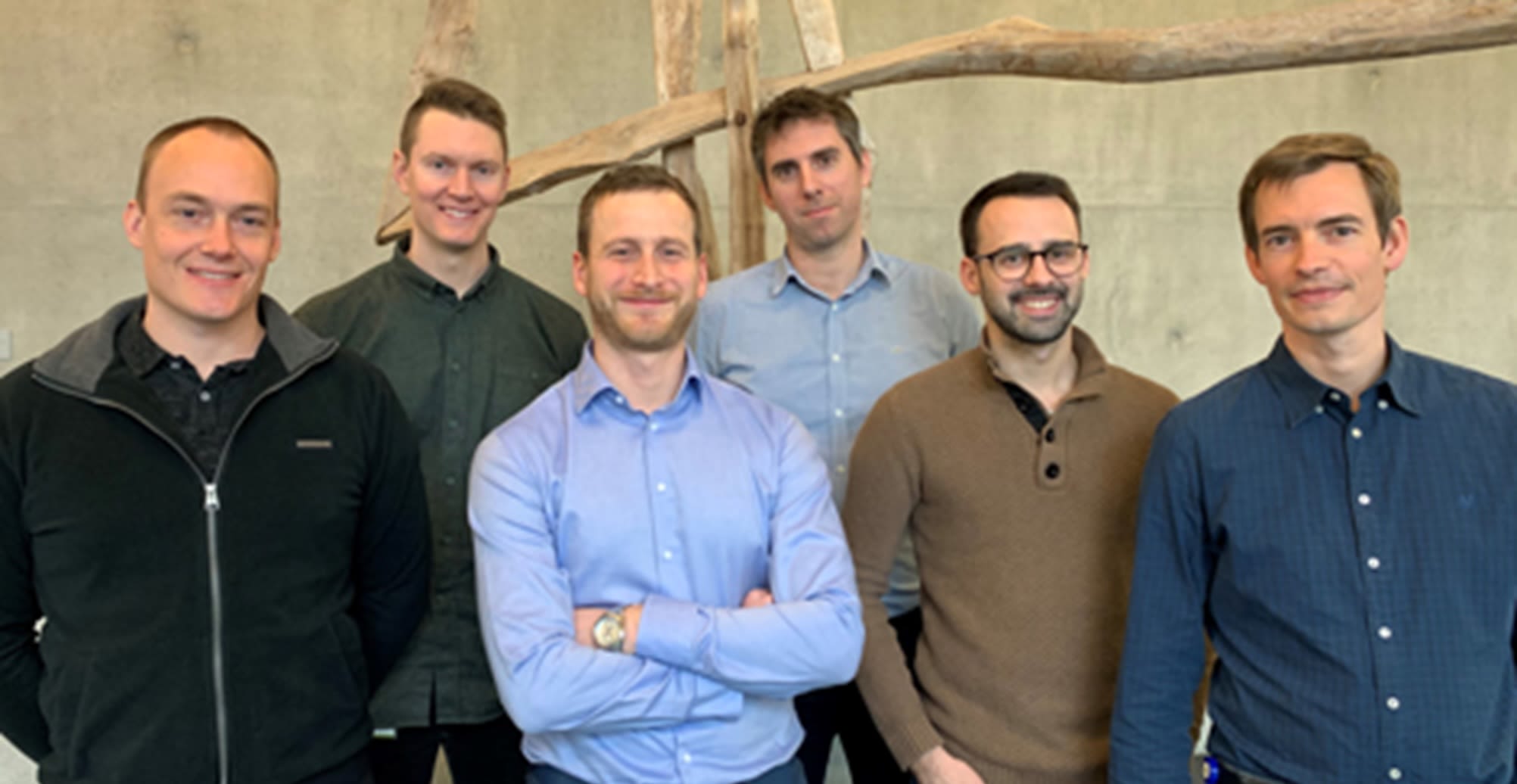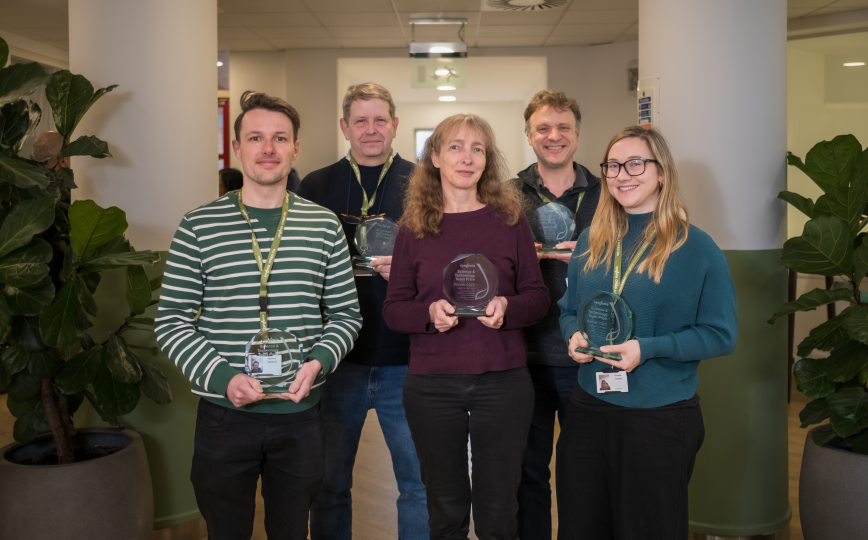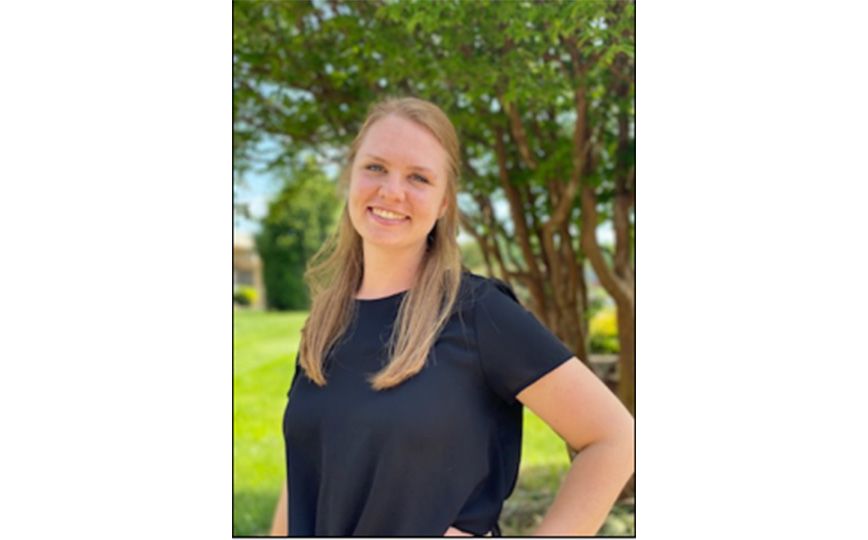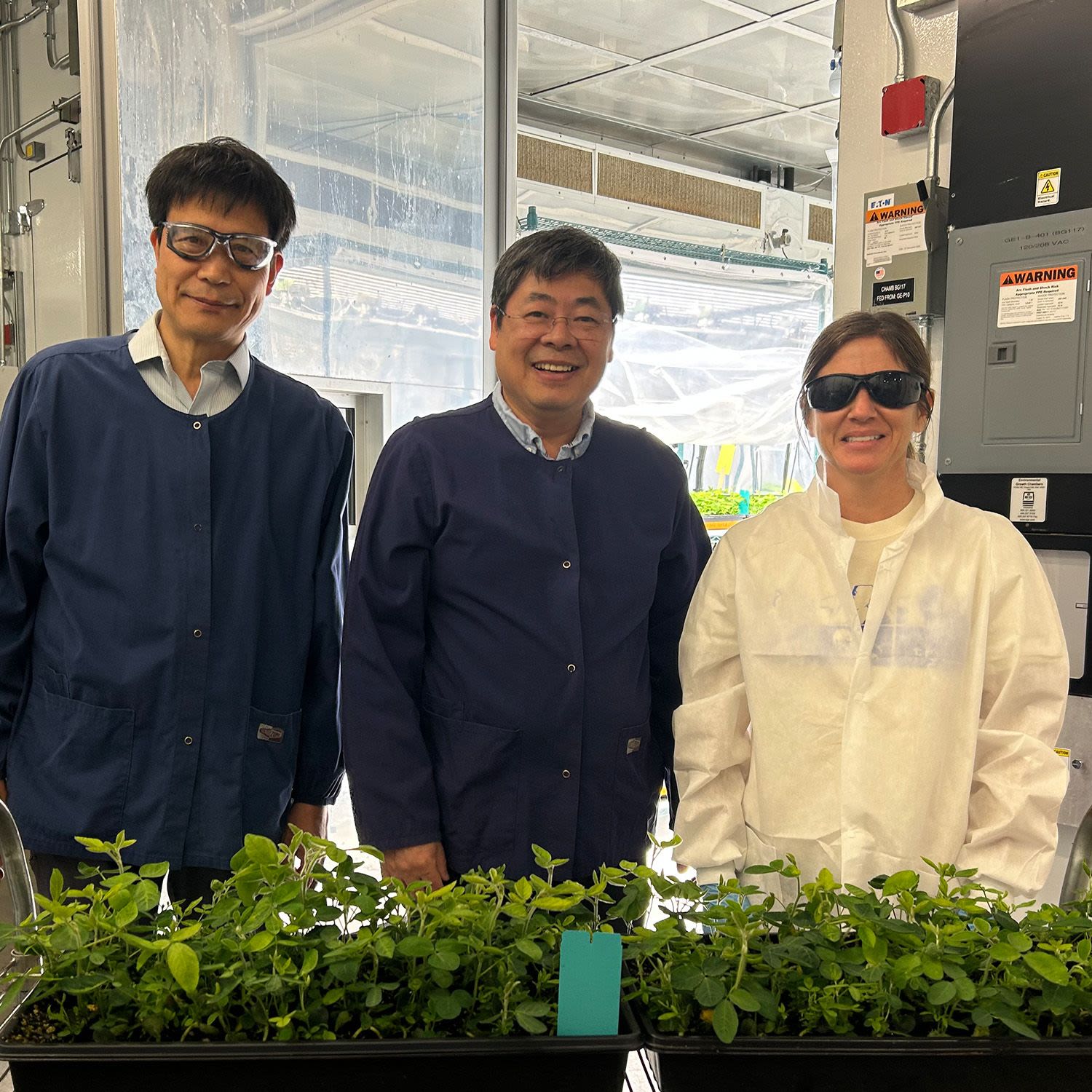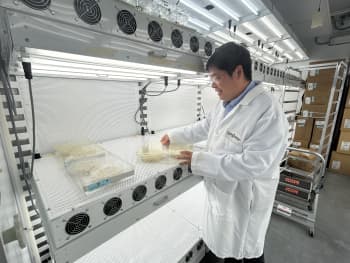The eureka moment
What it feels like to discover a breakthrough
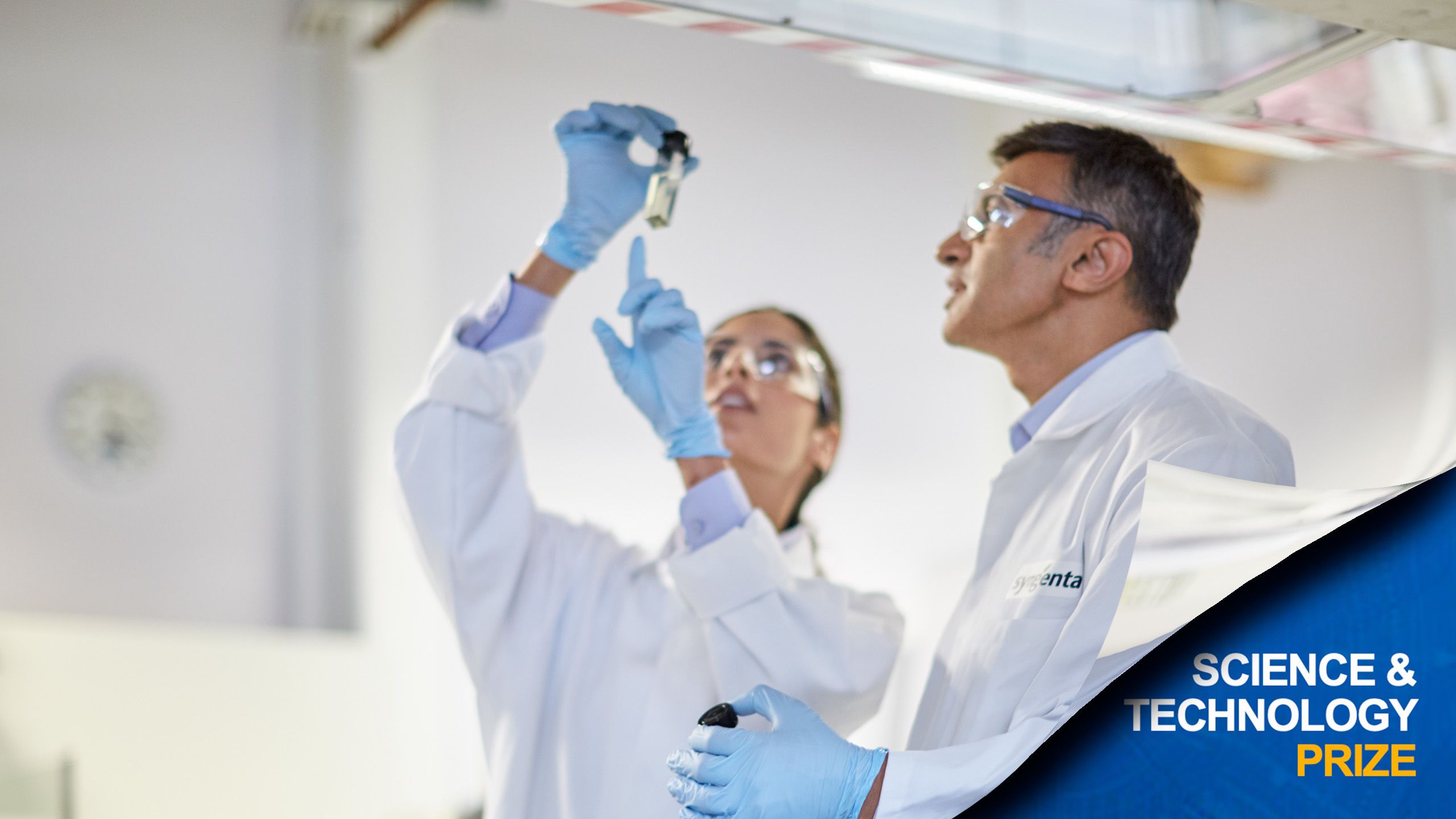
Aeureka moment is what every scientist dreams of achieving. “You might think you’d go home early and have a glass of wine,” says Chris Scarborough, Head of Disease Control and Insect Control Research Chemistry at Syngenta. “Instead, you go home even later, because you just can’t stop at that point – you want to get more data, so you want to work longer.”
He is describing the moment when he and colleagues in the Process Research team at Stein, Switzerland, made a breakthrough in developing an electrochemistry platform for the delivery of key molecules. The discovery set a new industry standard that was quicker and inherently sustainable.
Syngenta's research center in Stein, Switzerland.
Syngenta's research center in Stein, Switzerland.
It’s these moments that are celebrated by the Science and Technology (S&T) Prize, awarded to Syngenta scientists every year for transformative, innovative science. These prize-winning breakthroughs aren’t always about sudden inspiration but rather, years of hard work, collaboration and shared insight of expert teams working together.
What is the Syngenta Science & Technology Prize?
Syngenta recognizes our scientists' achievements and celebrates the breakthroughs that emerge from their work through the Science and Technology (S&T) Prize. Investing in exceptional talent and celebrating innovation is one of the reasons we are known as a top five science employer.
Is it really working?
Fellow prize-winning team member Alan Robinson, Head of Global Chemical Operations and Process Research, experienced what he describes as 'a prolonged eureka moment'.
The 2019 S&T Prize winning team, from left to right: Mattias Lehman, Chris Scarborough, Claudio Battilocchio, Alan Robinson, Dominque Marantelli, Michael Dieckmann.
The 2019 S&T Prize winning team, from left to right: Mattias Lehman, Chris Scarborough, Claudio Battilocchio, Alan Robinson, Dominque Marantelli, Michael Dieckmann.
Working in parallel with Scarborough and the rest of the team, Robinson was using photochemistry, studying how molecules change in response to the absorption of light.
When the breakthrough came, Robinson says: “I couldn’t quite believe it."
“I think I really annoyed the team by making them run the experiment again and again. We got it five times, and I thought: ‘Okay, now we can tell someone beyond myself and the closest team members that this is working.’”
The 2023 S&T Prize winning team, from left to right: Matt Rymaruk, Phil Taylor, Martine de Heer, Chris Lindsay, Annette Christie.
The 2023 S&T Prize winning team, from left to right: Matt Rymaruk, Phil Taylor, Martine de Heer, Chris Lindsay, Annette Christie.
Kelli Stockmal, Senior Staff Formulation Scientist was also part of the 2023 prize winning team.
Kelli Stockmal, Senior Staff Formulation Scientist was also part of the 2023 prize winning team.
One eureka moment after another
Chris Lindsay is a Syngenta Fellow at the Jealott’s Hill International Research Center in the UK. He was part of an S&T Prize-winning team that discovered a new way of microencapsulating crop protection products.
The active ingredients of crop protection tools always need to be formulated to be most effective. A vital part of this is creating microscopic capsules to carry the active ingredient – this is microencapsulation. But what happens when the material these capsules are made from can no longer be used because of regulatory changes?
"The first eureka moment came when we knew we had to do this because of an upcoming microplastics restriction in Europe," he says. “But then the other key thing was putting together a team of people with the right skills and setting up a collaborative way of working.”
The challenge the team faced was complex – would it be possible to develop a method for microencapsulation that would remain stable for years while the product is stored and, at the same time, quickly and safely biodegrade without compromising safety or product efficacy?
As Kelli Stockmal, Senior Staff Formulation Scientist who worked on the project, explains: “It’s straightforward to make microcapsules, but it’s really difficult to make good ones.”
Given the technical complexity and the stringent standards that a new way of microencapsulating would have to meet, breakthroughs were the product of patience and a team with a variety of complementary skills.
"None of my experiments worked the way I had hoped," recalls Stockmal. "I remember the first time I got a capsule that was in the target size range and wasn't flocculated or clumped together which was really promising. I immediately asked myself, ‘Okay, can I repeat this, and how do I improve it?' This breakthrough validated a promising pathway which would accelerate our progress.”
Lindsay says: “We had this big challenge and no way of knowing how to get there, we had a totally blank sheet of paper.”
Through close collaboration and a willingness to follow the evidence, the team explored promising approaches for solutions across synthetic chemistry, natural polymers and more.
Lindsay adds: "Yes, you can have your own eureka moment, but then you need a lot of other ones. And that's when you need complementary expertise and diverse perspectives.
“We shared ideas, it didn’t matter whose idea it was - nobody was hanging on to their approach to go forward. Whatever went forward, it was done with collective agreement,” he says.
The GiFT that keeps on giving
No matter where the project’s inspiration comes from, the excitement of a breakthrough is still ever present.
Take the team behind the prize-winning discovery of Genotype Independent Fast Transformation (GiFT) a new method for modifying soybean plants with new, beneficial traits like improved yield or enhanced disease resistance.
Former S&T Prize winner Heng Zhong, Syngenta Fellow in R&D Trait Generation, remembers his eureka moment clearly.
“We did the first experiment, and we suddenly got it,” he says. “My collaborator and I were so excited we went straight out of the greenhouse and told everyone: ‘We just got great results.’”
That collaborator was Changbao Li, Principal Scientist in Seeds Research. Zhong and Li were part of a team based at the Research Triangle Park in North Carolina, US.
2020 S&T Prize Winners Changbao Li, (left) and Heng Zhong (middle) alongside Operations Lead Tara Liebler.
2020 S&T Prize Winners Changbao Li, (left) and Heng Zhong (middle) alongside Operations Lead Tara Liebler.
Their team’s extraordinary breakthrough has made it possible to develop a new method of gene editing and genetic modification in soybeans – something that had remained stubbornly expensive and limited across the industry for decades. The process is faster and more efficient than anything that previously existed.
On their eureka moment, Li says: “It is my scientific dream to make science that is both new and useful. I felt the dream had come true in that moment. I’m very proud of that.”
The resulting platform developed from their breakthrough has helped build the world’s leading pipeline in soybeans. GiFT has been so important that most of Syngenta’s soybean production globally now uses the GiFT process.
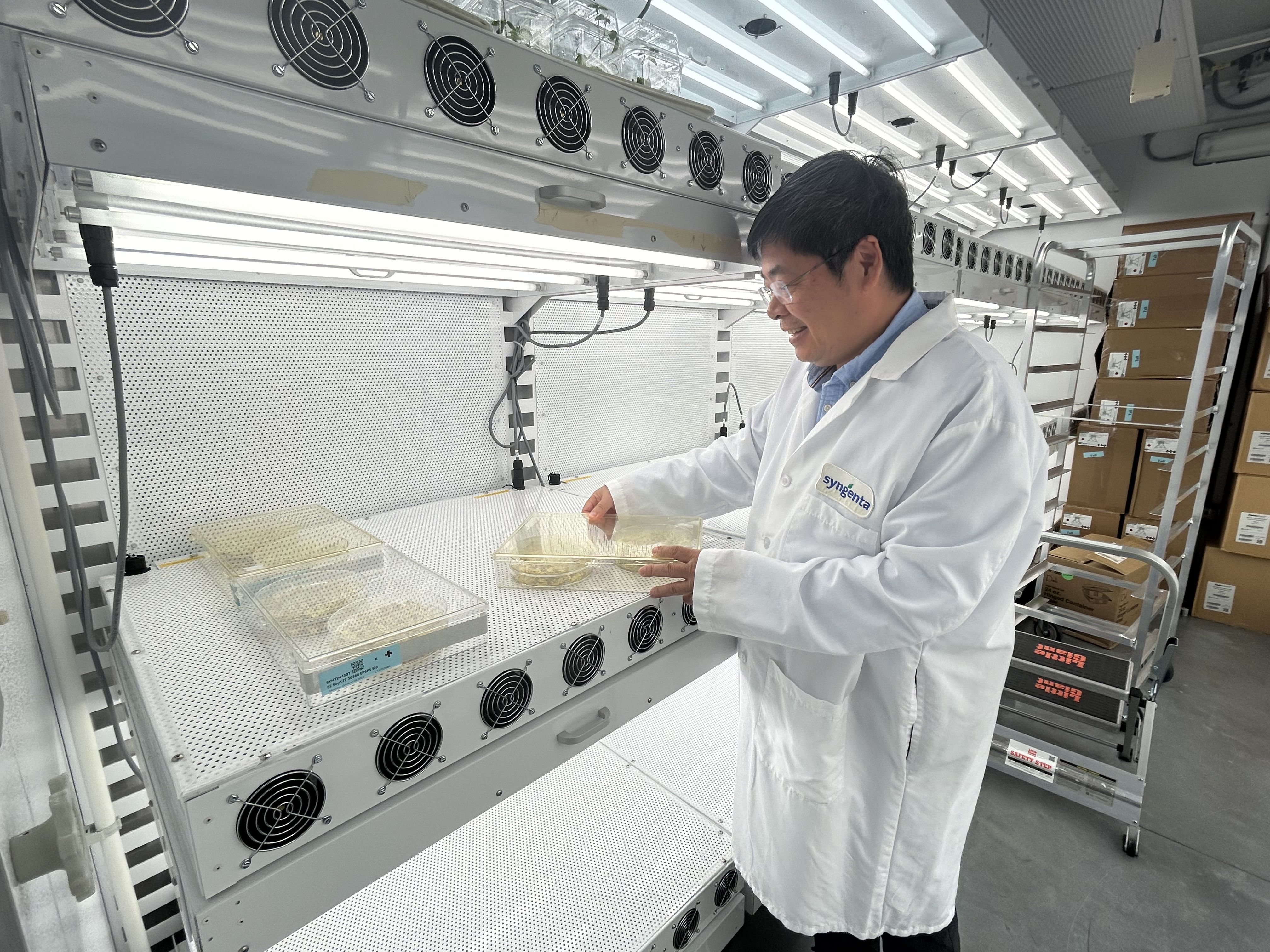
One of the biggest advantages of GiFT is its efficiency and speed, allowing scientists to quickly insert new genes into the soy genome. This process of insertion is known as a transgenic event.
Zhong says: “Production has increased from 2,000 transgenic events a year per person to 9,000 per person. This quadrupling means we can use the same resources more efficiently to work on other projects that require thousands of transgenic events.”
Whether it’s from a flash of insight or the patient work of many experiments, these eureka moments are a testament to the collective effort and expertise needed to bring breakthrough innovations at scale to the world of agriculture.


